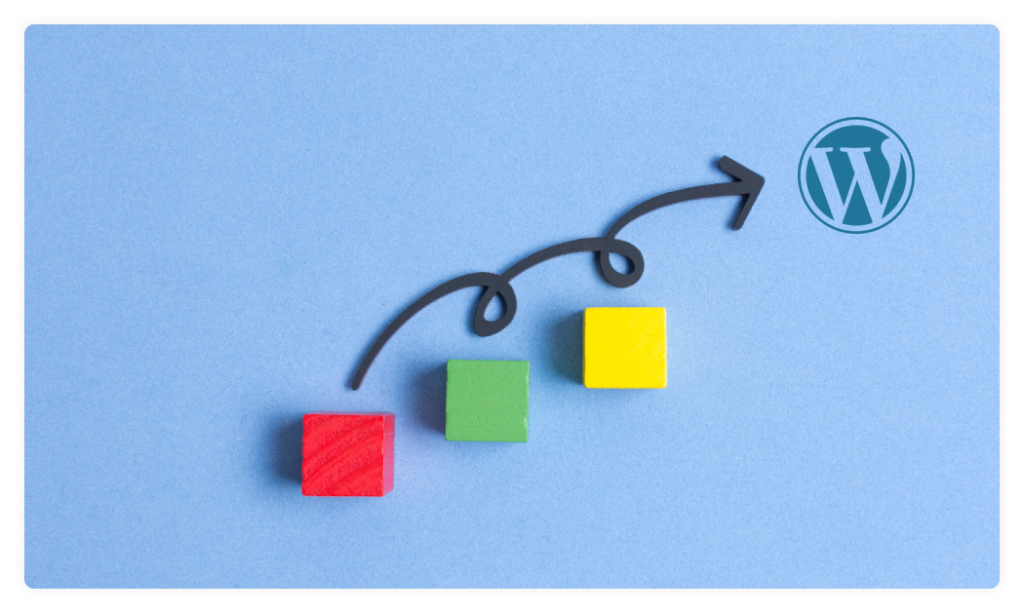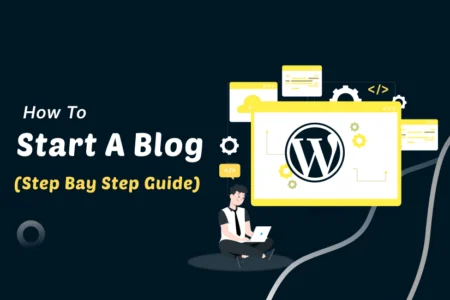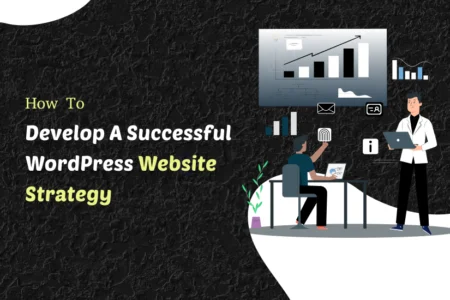From Blog to Business: Building a Membership Website with WordPress in 2024

Building a Membership Website with WordPress in 2024 is like giving your blog a makeover and adding a sprinkle of magic. It’s not about getting all techy; it’s about making your blog a hangout spot for your biggest fans. And trust me, it’s not complicated – it’s pretty cool!
In this guide, we’re keeping it simple. No confusing tech talk, just straightforward steps. By the end of it, you’ll see how WordPress can turn your blog into a place where people happily subscribe. Ready to explore the world of WordPress and membership websites? Let’s kick off this fantastic journey together!
What is a membership website?

A membership website is an online platform where users subscribe or become members to access exclusive content, services, or benefits. Instead of offering content freely to the public, a membership site typically restricts access to certain parts or features, reserving them for registered members who have either paid for a subscription or joined for free.
Why You Should Turn Your Blog Into a Membership Site

Transforming your blog into a membership site comes with several compelling reasons, each offering unique benefits that can take your online presence to new heights. Here are some key reasons why you should consider making the switch:
- Generate Recurring Revenue: Membership sites allow you to earn money consistently.
- Build a Community: Turning your blog into a membership site creates a sense of exclusivity.
- Offer Premium Content: With a membership site, you can provide exclusive, high-quality content to your members.
- Enhance User Engagement: Members are more likely to engage with your content, comment on posts, and interact with fellow members.
- Monetize Expertise: If you’re an expert in your field, a membership site allows you to monetize your knowledge.
- Diversify Income Sources: Relying solely on ads or product sales can be risky.
- Control Access to Content: A membership site gives you control over who sees what. You can create different membership levels with varying access privileges, tailoring your offerings to different audience segments.
What are the Essential Features of a membership website

Creating a WordPress membership website involves incorporating key features to ensure a seamless user experience, effective content management, and robust membership functionalities. Here are essential features for a WordPress membership website:
- User Registration/Login: A streamlined process for user registration and secure login.
- Membership Levels: Create different tiers for diverse access levels and perks.
- Content Restriction: Restrict content based on membership levels for exclusivity.
- Payment Gateway Integration: Seamless integration of secure payment gateways for transactions.
- Subscription Management: Easy user management for upgrades, downgrades, and cancellations.
- Automated Email Notifications: Set up automated emails for member sign-ups and renewals.
- Responsive Design: The mobile-friendly theme for a consistent user experience.
- Community Forums/Social Features: Foster engagement with forums or social interaction options.
- Member Directory: Enable members to find and connect.
- Drip Content: Schedule content releases over time for ongoing engagement.
- Analytics and Reporting: Integrate tools for tracking user engagement and site metrics.
- Security Measures: Implement SSL, secure payment gateways, and regular updates.
- Customization Options: Easily customize themes or use page builders for a unique look.
These features collectively create a user-friendly, secure, and engaging WordPress membership website, providing a strong foundation for your online community or business.
Requirements for creating a membership website

Creating a WordPress membership website involves specific requirements to set up a functional and secure platform. Here’s a brief list of essential elements you’ll need:
- Domain Name and Hosting: Choose and register a domain name that suits your brand.
- WordPress Installation: Install WordPress on your hosting server.
- Membership Plugin: Select and install a WordPress membership plugin. Popular options include MemberPress, Restrict Content Pro, or Paid Memberships Pro. These plugins enable you to manage memberships, content restrictions, and payments.
- Payment Gateway: Integrate a secure payment gateway to handle subscription transactions. Common choices include PayPal, Stripe, or other reputable payment processors.
- SSL Certificate: Ensure your website has an SSL certificate for secure data transmission, especially important when handling payment information.
- Responsive WordPress Theme: Choose a responsive WordPress theme that adapts to different screen sizes.
- Content for Members: Plan and create exclusive content for your members. This could be articles, videos, courses, or any other valuable material that incentivizes membership.
- User Registration and Login System: Set up a user-friendly registration and login system for members. WordPress provides built-in features for this, and your chosen membership plugin may enhance these capabilities.
- Content Restriction: Configure content restriction settings using your membership plugin. This allows you to control access to specific pages or posts based on membership levels.
- Subscription Management: Enable users to manage their subscriptions easily. This includes options to upgrade, downgrade, or cancel memberships from their user accounts.
- Backup System: Implement a regular backup system to safeguard your website’s data. Many hosting providers offer automated backup solutions.
By addressing these requirements, you’ll be well on your way to creating a robust and successful WordPress membership website.
Steps to Build a Membership Website with WordPress

Step #1: Selecting the Right WordPress Hosting
Choose a reliable hosting provider that offers optimal performance, security, and scalability. Consider managed WordPress hosting services for hassle-free site management and improved speed.
Step #2: Installing WordPress
Most hosting providers offer a one-click WordPress installation process. Once installed, customize your site settings, including the site title, tagline, and permalink structure.
Step #3: Choosing a Membership Plugin
To create a membership structure, install a dedicated membership plugin such as MemberPress, Restrict Content Pro, or Paid Memberships Pro. These plugins allow you to define membership levels, restrict content access, and manage subscriptions seamlessly.
Step #4: Designing Your Membership Site
Opt for a professional and user-friendly theme that aligns with your brand. Customization is key, so choose a theme that allows you to create a visually appealing and responsive design.
Step #5: Creating Compelling Content
Develop high-quality, exclusive content for your members. This could include premium articles, video tutorials, downloadable resources, or member-only forums. Ensure that the content adds significant value to encourage membership sign-ups.
Step #6: Setting Up Payment Gateways
Configure secure payment gateways to handle transactions smoothly. WordPress supports popular options such as PayPal, Stripe, and WooCommerce, making it easy for members to subscribe and for you to manage subscriptions.
Step #7: Implementing Content Restriction
Use your chosen membership plugin to restrict access to premium content based on membership levels. This ensures that only paying members can enjoy the full array of exclusive material.
Step #8: Testing and Launching
Before launching your membership website, thoroughly test all features, payment processes, and user interfaces to guarantee a seamless experience for your members. Address any issues promptly to provide a polished and professional site.
Step #9: Promoting Your Membership Site
Leverage your existing blog audience, social media platforms, and email marketing to promote your membership site. Consider offering special launch promotions or limited-time discounts to incentivize early sign-ups.
Conclusion
In conclusion, As we delve into 2024, the transition from a blog to a business-oriented membership website with WordPress holds immense potential for content creators. With the right tools, strategy, and dedication, you can transform your passion into a sustainable source of income while nurturing a thriving online community. Embrace the power of membership websites and unlock new possibilities for your digital journey.
FAQs
Do you have any questions about building a membership website with WordPress? We have answers to some frequently asked questions on the topic.
Q1: How do I handle payments securely on my membership website?
A1: WordPress plugins like MemberPress and WooCommerce provide secure payment gateways, ensuring that transactions are processed safely. Always use SSL certificates for an added layer of security.
Q2: Is it possible to integrate e-learning features into my membership website?
A2: Yes, many plugins, such as LearnDash and LifterLMS, seamlessly integrate with WordPress, allowing you to create and sell online courses as part of your membership offerings.
Q3: Can I customize the design of my membership website?
A3: Yes, WordPress offers numerous themes and customization options. You can choose a theme that aligns with your brand and customize it to create a unique look for your membership site.
Q4: How can I promote and attract members to my website?
A4: Utilize social media, email marketing, and SEO strategies to drive traffic. Offer exclusive content initially to entice users to become members. Consider running promotions or discounts for early subscribers.
Q5: Do I need coding skills to build a membership website with WordPress?
A5: No, you don’t need advanced coding skills. WordPress provides intuitive tools and plugins that allow you to set up a membership site without writing code. However, some basic understanding can be beneficial.
Q6: What are the essential plugins for a WordPress membership site?
A6: Popular plugins include MemberPress, Restrict Content Pro, and LearnDash. These plugins enable you to manage memberships, restrict content, and create online courses.
Hi, This is Biplob Hossain. I am professional content writer. I successfully wroten a lot of content about Web development topics. I am also good web developer.
Related Articles

6 Step-by-Step Guide: How to Start a Blog Using WordPress
Learn how to start a blog using WordPress in this comprehensive guide. We cover everything from choosing a domain name and hosting provider to installing WordPress, selecting a theme,...

Top 10 WordPress Mistakes Killing Your Website Traffic in 2024
Don't let your website suffer – learn how to tackle the top 10 WordPress mistakes and transform your online presence with practical solutions.

Why choose WordPress for your small to large-scale business website?
WordPress is a popular content management system (CMS) that can be used to create and manage websites of all sizes. It is easy to use, scalable, and affordable, making...